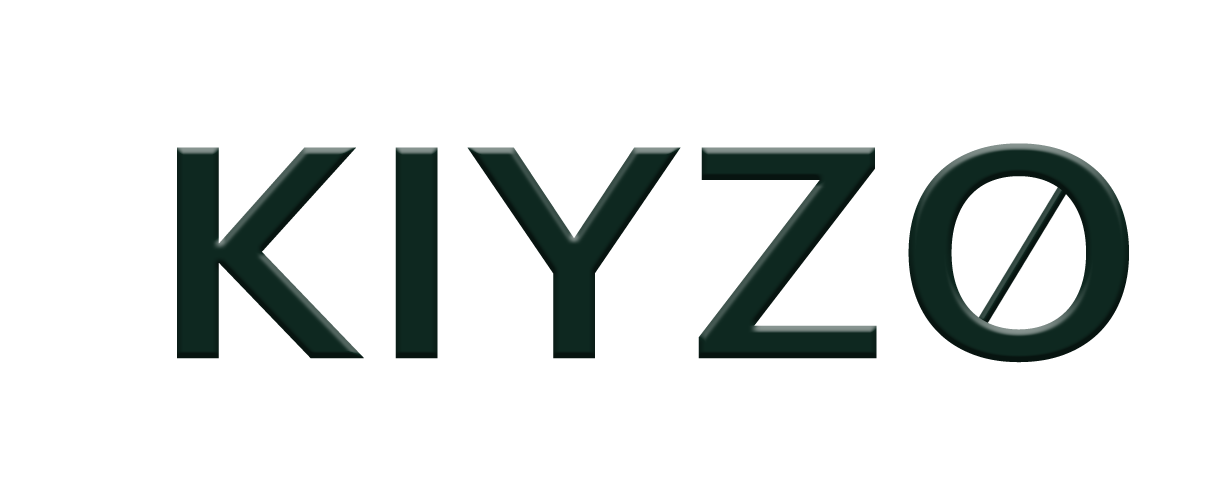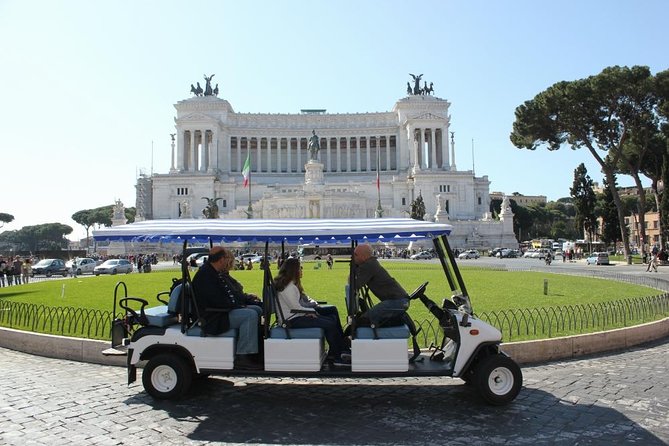- Private Guide who will explain the history
- Professional guide golf expert
- Hotel pickup (Meeting point to hotel distance -2 km)
- Eco friendly Private transportation
- Drinks
GOLF CART TOUR INFO
Please note At the beginning of the tour your guide will discuss itinerary and calculate his route accordingly. Tour could include as many sites as time permit. Bellow you will find a list of sites you could visit during the tour.
- Colosseum Visit Rome’s most famous and iconic site: The almighty colosseum or by it’s true name: the Flavian amphitheater. Where Gladiators would fight for their lives and emperors would win the people hearts.
- Arch of Constantine (Pass By) Victory arches are indeed a Roman invention. Three of them are still standing in Rome including this one which belongs to the Famous Constantine the Great who is responsible for Christianity taking over Rome and the known world.
Spanish Steps With its irregular butterfly design, the beautiful “Scalina Spagna”, or Spanish Steps are just one of these must see places when in Rome and a great example of Roman Baroque Style. The steps are a wide irregular gathering place consisted of a mix of curves, straight flights, vistas and terraces.
Knights of Malta Keyhole
Peep through Romes famous keyhole for a beautiful surprise and learn about yet another tiny country inside Rome!Chiesa di Sant’ Ignazio di Loyola: Visit this beautiful Jesuit church dedicated to the founder of the Jesuit order and get a real nice surprise while looking at its dome!
Circus Maximus: See the site on which famous chariot races took places on the largest stadium ever built which was used for thousand years.
Giardino degli Aranci: Get a fantastic view of Rome roof tops while on top of the Aventino hill.
Piazza Navona: Rome’s most beautiful square dominated by the famous fountain of the four rivers. This elliptic square maintains the shape of the ancient stadium of Domitian.
Villa Borghese: Visit Rome’s famous park, surrounded by statues, fountains and pass by the Pincian hill overlooking Piazza del Popolo, St Peters and Rome’s historical center..
Trajan Column: Visit this extraordinary gigantic marble column which has been standing in place for 2000 years telling in detail the story of the Dacian war and the glory of Emperor Trajan.
Fontana dell’Acqua Paola Known as Il Fontanone (“The big fountain”) is a monumental fountain located on the Janiculum Hill. It was built in 1612 to mark the end of the Acqua Paola aqueduct, restored by Pope Paul V overlooking beautiful Trastevere
Mouth of Truth Put your hand inside this Ancient marble mouth which was used as a lie detector through the middle ages. Be careful with what you say!
Trastevere (Pass By) Explore the tiny and colorful alleys which have been once aמ old Fishermans neighborhood. Today you will find the finest bars, cocktails bars, restaurants and nightlife. Also throughout the day is a pleasure for the eyes.
Turtle Fountain Considered by many as Rome’s most romantic fountains and square. And guess what? It also has a great story!
Basilica di San Pietro in Vincoli Visit this beautiful church which houses one of MichelAngelos most famous statues: Moses holding the ten commandments.
Piazza Farnese Impressive and tall stands the big most important Renaissance building facing the Piazza. Decorated is this Piazza with details from the ancient bath of Caracalla.
Giuseppe Garibaldi Monument Get on top of the Janiculum hill, visit the monument dedicated to Garibaldi and the unification of Italy. If we arrive by 12pm we could see the famous canon shooting the city.
Piazza Venezia / Ancient City This busy Piazza is just full of stories accumulated throughout the history. Hard to decide what to look at first.
Ghetto The word Ghetto comes from Venice. Just a couple of years later, a Ghetto was also created in Rome as a closed neighborhood for the Roman Jews, which is the oldest continued Jewish community in the world.
Fiumi Fountain Bernini’s masterpiece is Considered alongside Trevi as the most beautiful fountain in Rome with a great story about the rivalry between two geniuses of the Baroque: Bernini vs Borromini
Santa Maria Sopra Minerva Bernini’s Minerva chick : Just behind the Pantheon, in front of the dominating church of Santa Maria sopra la Minerva, lies another masterpiece of Bernini : the Elephant statue carrying an ancient Egyptian obelisk. Find out why it’s called a chick and get another great story involving art, Cardinals and the Pope.
Campo de’ Fiori, 33: Enjoy the colorful marked with lovely shops, bars and restaurant and hear the story of the dramatic story behind the today joyful scenery
Teatro di Marcello This little brother of the Colosseum is actually older than its bigger brother. Already Ceasar was involved in building which is today privately owned. Architecturally seen it tells multiple stories.
Caelian Hill: One of Rome’s 7 hills where you could visit the beautiful church of santissimi Giovanni e Paolo, the remaining of the temple of Hadrian and the beautiful Villa Celimontana
1) Rome was founded in 753BC by its first king, Romulus. It grew into a rich and powerful city during the next few hundred years.
2) By AD 117 the Roman Empire included the whole of Italy, all the lands around the Mediterranean and much of Europe, including England, Wales and parts of Scotland.
3) Roman legend says that Romulus had a twin brother called Remus. As babies they were abandoned in the area which later became Rome. A she-wolf found and raised them, but when they grew up, Romulus fought and killed Remus and became the first ruler of Rome!
4) The Romans built such a huge empire and conquered new lands, thanks to their strong army. The Roman army could march up to 40km a day!
5) During battle, a Roman soldier or ‘legionary’ first hurled his spear at the enemy, then he fought him with his sword. To protect himself, he carried a wooden shield and wore a metal helmet and armour.
6) The Romans didn’t spend all their time fighting – they were amazing architects and engineers too! They built roads and walls – things we now take for granted.
7) To bring water to their cities, the clever Romans built aqueducts – a system of channels and bridges – to transport water for public baths and toilets!
8) The Romans liked to enjoy their food, often lying down on a couch while eating with their hands. They occasionally used a spoon, but they would never use a knife and fork. Rich Romans liked to eat exotic food, such as stork, roast parrot and even flamingo!
9) The Romans believed in gods and goddesses who ruled over different areas of life. For example, Neptune was the god of the ocean, and they prayed to him to protect them at sea. Temples were built to honour the gods, and people would visit them with offerings.
10) One of the most famous buildings left by the Ancient Romans is the Colosseum – a huge ampitheatre in the centre of Rome. This is where members of the public would come to watch sporting events and games, including battles between Roman gladiators!
11) Tunics – two pieces of woollen fabric sewn together at the sides and shoulders, with openings for your arms and head – were the most common clothes in Rome. Some Romans also wore togas – a kind of woollen shawl – to show how wealthy they were src
The history of the Roman Empire can be divided into three distinct periods: The Period of Kings (625-510 BC), Republican Rome (510-31 BC), and Imperial Rome (31 BC – AD 476).
Founding (c. 625 BC)
Rome was founded around 625 BC in the areas of ancient Italy known as Etruria and Latium. It is thought that the city-state of Rome was initially formed by Latium villagers joining together with settlers from the surrounding hills in response to an Etruscan invasion. It is unclear whether they came together in defense or as a result of being brought under Etruscan rule. Archaeological evidence indicates that a great deal of change and unification took place around 600 BC which likely led to the establishment of Rome as a true city.
Period of Kings (625-510 BC)
The first period in Roman history is known as the Period of Kings, and it lasted from Rome’s founding until 510 BC. During this brief time Rome, led by no fewer than six kings, advanced both militaristically and economically with increases in physical boundaries, military might, and production and trade of goods including oil lamps. Politically, this period saw the early formation of the Roman constitution. The end of the Period of Kings came with the decline of Etruscan power, thus ushering in Rome’s Republican Period.
Republican Rome (510-31 BC)
Rome entered its Republican Period in 510 BC. No longer ruled by kings, the Romans established a new form of government whereby the upper classes ruled, namely the senators and the equestrians, or knights. However, a dictator could be nominated in times of crisis. In 451 BC, the Romans established the “Twelve Tables,” a standardized code of laws meant for public, private, and political matters.
Rome continued to expand through the Republican Period and gained control over the entire Italian peninsula by 338 BC. It was the Punic Wars from 264-146 BC, along with some conflicts with Greece, that allowed Rome to take control of Carthage and Corinth and thus become the dominant maritime power in the Mediterranean.
Soon after, Rome’s political atmosphere pushed the Republic into a period of chaos and civil war. This led to the election of a dictator, L. Cornelius Sulla, who served from 82-80 BC. Following Sulla’s resignation in 79 BC, the Republic returned to a state of unrest. While Rome continued to be governed as a Republic for another 50 years, the shift to Imperialism began to materialize in 60 BC when Julius Caesar rose to power.
By 51 BC, Julius Caesar had conquered Celtic Gaul and, for the first time, Rome’s borders had spread beyond the Mediterranean region. Although the Senate was still Rome’s governing body, its power was weakening. Julius Caesar was assassinated in 44 BC and replaced by his heir, Gaius Julius Caesar Octavianus (Octavian) who ruled alongside Mark Antony. In 31 BC Rome overtook Egypt which resulted in the death of Mark Antony and left Octavian as the unchallenged ruler of Rome. Octavian assumed the title of Augustus and thus became the first emperor of Rome.
Imperial Rome (31 BC – AD 476)
Rome’s Imperial Period was its last, beginning with the rise of Rome’s first emperor in 31 BC and lasting until the fall of Rome in AD 476. During this period, Rome saw several decades of peace, prosperity, and expansion. By AD 117, the Roman Empire had reached its maximum extant, spanning three continents including Asia Minor, northern Africa, and most of Europe.
In AD 286 the Roman Empire was split into eastern and western empires, each ruled by its own emperor. The western empire suffered several Gothic invasions and, in AD 455, was sacked by Vandals. Rome continued to decline after that until AD 476 when the western Roman Empire came to an end. The eastern Roman Empire, more commonly known as the Byzantine Empire, survived until the 15th century AD. It fell when Turks took control of its capital city, Constantinople (modern day Istanbul in Turkey) in AD 1453.

